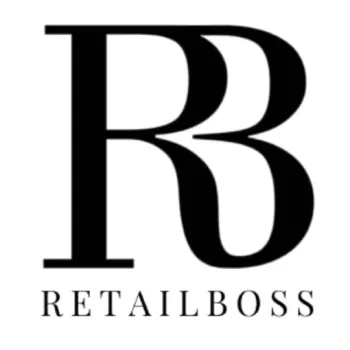Average Order Value (AOV) is a metric that helps retailers understand their customers’ purchasing behaviours. An average order value tracks the average dollar amount spent every time a customer places an order. Like with all other key metrics, AOVs can be tracked over any time period, but most companies prefer to monitor their AOVs as a moving monthly average.
- What is Average Order Value (AOV)?
- Benefits of Knowing Your AOV
- The formula for Calculating AOV
- Example Calculation of AOV
- Why AOV Matters for Retailers
- Improving Your AOV
- Product Bundles and Cross-Selling
- Free Shipping Thresholds
- Loyalty Programs and Discounts
- Up-Selling and Personalization
- AOV and Other Key Metrics
- Relationship between AOV, Conversion Rate, and Revenue Per Visit
- Importance of Tracking AOV over Time
- Bottom Line
What is Average Order Value (AOV)?
Average order value is a critical metric for all data-driven businesses to track if they want to scale their profits and revenue growth. Knowing the average dollar spent on each order placed across your business channels can help you plan pricing and marketing strategies to increase that value then — which can significantly impact your bottom line.
Benefits of Knowing Your AOV
Knowing your company’s average order value helps you to evaluate your pricing strategy and online marketing efforts by providing the metrics needed to measure the long-term value of individual customers.
Businesses can directly impact their revenue growth by increasing their average order value. When you expand the average order value, you sell more inventory. Since customers are buying more products, your revenue increases. Consolidating the same amount of units sold to an individual customer into a single sale cuts costs.
“As customer acquisition costs continue to rise and competition becomes more fierce, you need the higher AOV for your unit economics to continue making sense,” says Casey Armstrong, CMO at ShipBob.
The formula for Calculating AOV
You can easily calculate your average order value by dividing total revenue by the number of orders during a given period.
For example:
Your total revenue for October was $90,000.
The total number of orders on your e-commerce channels for October was 1,437.
To calculate AOV = $90,000 / 1437 = $62.63
Based on this data, your average order value (AOV) during October was $62.63.
Example Calculation of AOV
Calculating your eCommerce businesses average order value is as simple as dividing total revenue by the total number of orders in a period. For example, if eCommerce sales for June were $25,000 from a total of 800 orders:
$25,000 / 800 = $31.25
Why AOV Matters for Retailers
Knowing your company’s average order value helps you evaluate your overall online marketing efforts and pricing strategy by giving you the metrics needed to measure the long-term value of individual customers. This information can help you identify opportunities to increase revenue by offering complementary products or services that align with your customers’ interests and needs.
Impact of Increased AOV on Sales, Revenue, and ROI
Increasing average order value is one of the most important metrics to track for any retailer. It’s how you can offset customer acquisition costs to reduce your payback period and increase ROI, which means you can accelerate your path to profitability or put more money into advertising and product development.
Improving Your AOV
Numerous strategies will help increase your average order value, and there are two different ways to encourage your customers to spend more: by purchasing more or by buying more expensive products.
Product Bundles and Cross-Selling
A great way to increase the average order value is by offering product bundles or cross-selling complementary products. Bundling products together can offer customers a discount and encourage them to spend more money.at once. Cross-selling complementary products can also provide additional value to customers and increase the likelihood of them purchasing. Another effective way to increase average order value is by offering upsells during checkout. This can include offering a higher-end version of the product or adding on an accessory that complements the original purchase.
Free Shipping Thresholds
Another way to increase AOV is by offering free shipping thresholds. Customers are more likely to add additional items to their cart to reach the free shipping threshold, thus increasing their order value. This strategy works well for e-commerce businesses as it increases AOV and encourages customers to make repeat purchases. Free shipping thresholds can also help businesses retain customers and build customer loyalty.
However, it’s important to consider the cost of offering free shipping carefully and set the threshold at a level that makes sense for your business’s profit margins. Additionally, businesses can consider offering expedited shipping options for customers willing to pay for faster delivery, which can further increase AOV and revenue.
Loyalty Programs and Discounts
Offering loyalty programs and discounts to customers who spend over a certain amount can also help increase AOV as customers are incentivized to spend more to receive discounts or rewards. Another way to increase AOV is by offering bundled deals or package offers, where customers can purchase multiple items at a discounted price. This not only encourages them to spend more but also helps to move inventory faster. Additionally, providing personalized product recommendations or cross-selling complementary products to customers during checkout can help increase AOV.
If you suggest products that complement your customer’s existing purchases, they will be more likely to add to their cart and spend more. It’s important to balance incentivizing customers to spend more and not seeming too pushy or aggressive with sales tactics.
Up-Selling and Personalization
Up-selling is another effective strategy for increasing AOV. By offering personalized product recommendations or suggesting higher-priced, but better-quality items, customers are more likely to purchase more expensive products that they may not have considered otherwise. Up-selling can also lead to increased customer satisfaction if the recommended products meet or exceed their expectations. However, it is important to be mindful of the customer’s budget and avoid pressuring them into making purchases outside their means. A successful up-sell should provide value to the customer and enhance their overall shopping experience.
AOV and Other Key Metrics
Relationship between AOV, Conversion Rate, and Revenue Per Visit
A benchmark of customer purchasing behaviour, AOVs aid goal setting and strategy enhancement and help you evaluate how well those business strategies are working. An increase in AOVs for online retailers strongly correlates to increased profit. When a retailer can improve their average order value, they can directly improve profit and revenue growth.
Knowing average order values offers a window into shopper behaviours and how much they spend on your products. When you understand what your customers are spending per order, you can then plan pricing and marketing strategies to improve the value of each order.
Whereas AOV relates to the value of each order, revenue per visitor refers to the value of each visitor to your website or store. You can calculate your revenue per visits by totaling your revenue and dividing by the total number of visits to your website. A higher RPV indicates that you are receiving more qualified traffic to your store or website.
Importance of Tracking AOV over Time
Monitoring your AOV over time is crucial for understanding trends and changes in customer behaviour. Changes in AOV can signal shifts in the market, customer preferences, or the effectiveness of your marketing efforts. Regularly tracking AOV can give you valuable insights into how your strategies are performing and how to optimize them for better results.
For example, suppose your AOV has steadily increased over the past six months. In that case, it may indicate that your marketing efforts and pricing strategies effectively encourage customers to spend more with each order. On the other hand, if your AOV has been decreasing, it may be time to evaluate and adjust your marketing and pricing strategies to better cater to your customers’ needs and preferences.
Bottom Line
In conclusion, Average Order Value (AOV) is a crucial metric for retailers to understand and track. It provides insights into customer purchasing behaviours, which can inform pricing strategies, online marketing efforts, and overall revenue growth. By focusing on increasing AOV, retailers can directly impact their sales, revenue, profitability, and returnon investment (ROI).
Implementing strategies such as product bundling, cross-selling, offering free shipping thresholds, loyalty programs, and up-selling can help businesses improve their AOV. Continuously monitoring AOV alongside other key metrics like conversion rate and revenue per visit provides valuable insights into your marketing efforts’ effectiveness and helps identify improvement areas.

















